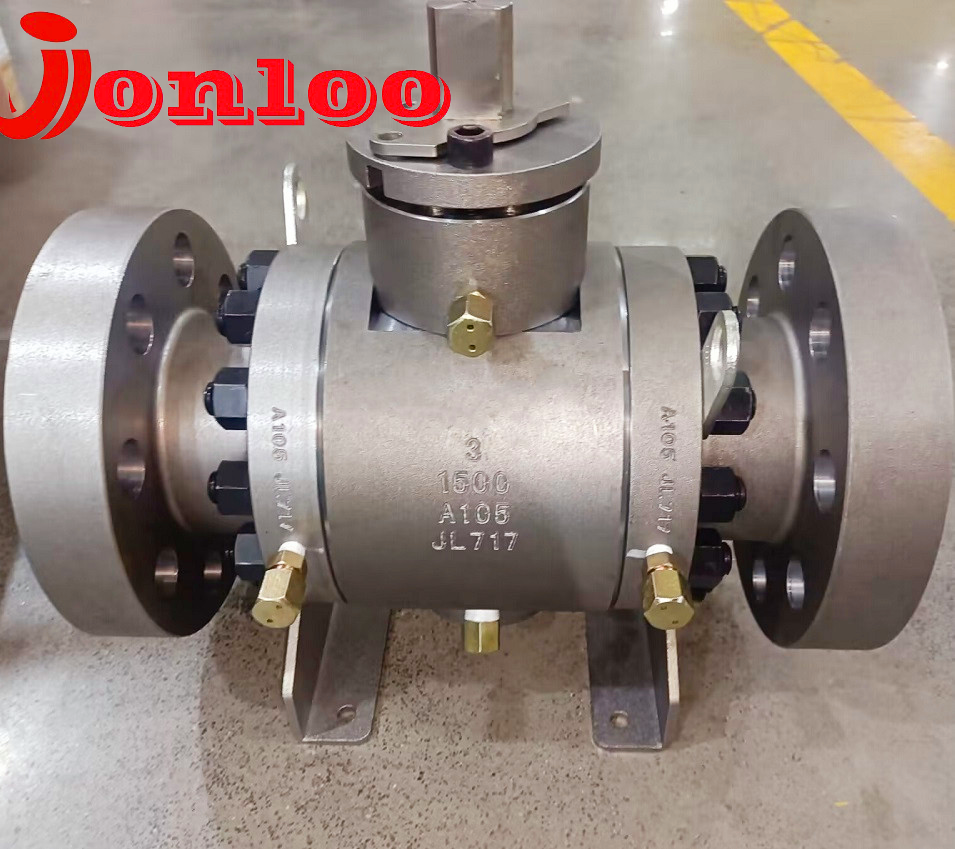A ball valve is a kind of quarter-turn valve that regulates fluid flow by means of a hollow, revolving ball. It has a spherical disk with a hole in the middle through which, when aligned with the flow route, liquid can pass. The ball rotates to obstruct the flow path and stop fluid flow when the valve is closed. Ball valves are extensively utilized in many industries, such as the oil and gas sector, because of their dependable and effective flow control qualities.
Floating Ball Valves
Rather than being fixed in place, the ball in a floating ball valve moves back and forth between the two seats. A tight seal is created when the valve is closed because the ball is forced up against the downstream seat.
Since the sealing ability of floating ball valves may be hampered in larger and higher pressure applications, they are usually used in smaller, lower pressure applications.
Trunnion-Mounted Ball Valves
Balls in trunnion-mounted ball valves are supported by higher and lower trunnions, or bearings, which lessen friction between the balls and the seats by absorbing line pressure.
The design of the trunnion-mounted ball valve works well for sealing applications that are large and high-pressure. In the meantime, the trunnion operates at a low torque requirement in comparison to other varieties, which facilitates easier operation and reduces the need for additional actuators.
Full Port/Reduced Port Ball Valves
Full port ball valves provide minimal pressure drop and totally unfettered flow since their bore size precisely matches the pipeline's internal diameter. For applications where a high flow rate is required, these valves are perfect. Conversely, reduced port ball valves are usually lighter and smaller than full port valves; however, they have a lower bore size, which results in less flow area and a higher pressure drop.
Multi-Port Ball Valves
Ball valves with several ports that offer different flow routes enable users to quickly switch between directions. 3-way and 4-way ball valves are examples of this type of valve; they can be used in any application to bypass, mix, or divert flow. Additionally, the ports and ball structure can be adjusted to precisely suit the needs of any unique flow scenario.
Top-Entry/Side-Entry Ball Valves
Top-entry ball valves may be easily maintained and repaired without needing to remove the valve from the pipeline thanks to their one-piece bodies and detachable bonnets. Applications where there is a shortage of space or challenging pipeline disassembly can benefit from this design.
Conversely, side-entry ball valves have a two- or three-piece body that is fastened together. The valve needs to be taken out of the pipeline in order to perform maintenance or repairs. Ball valves with side entries are more widely used and less expensive than those with top entries.
Ball Valve Applications in the Oil and Gas Industry
1. Operational Upstream
Wellhead Isolation: Ball valves are used to isolate wellheads during the drilling, completion, and production stages in order to maintain safety and control over the flow of gas and oil.
Subsea Installations: Ball valves provide consistent fluid flow control in subsea applications that are subjected to high temperatures, pressures, and corrosive environments.
Christmas Tree Assemblies: Ball valves are essential parts of these assemblies that regulate and track the flow of gas and oil from wells.
2. Midstream Operations
Pipeline Transportation: In pipeline transportation systems, ball valves are used for isolation, flow control, and pressure regulation of gas and oil.
Gas Processing Plants: Ball valves regulate the flow of natural gas in these facilities during different processing phases, including separation, dehydration, and sweetening.
3.Refineries that operate downstream
Ball valves are used in refineries to regulate the flow of crude oil and refined products during blending, cracking, and distillation, among other operations.
Ball valves are used in petrochemical plants to control the flow of feedstocks and chemicals during the production of plastics, fertilizers, and other products.
Storage and Distribution Facilities: In systems used for the storage and distribution of oil, gas, and petrochemical products, ball valves are crucial for regulating flow and ensuring security.
1) Quick Operation: Ball valves are quarter-turn valves that can be opened and closed quickly by simply rotating the valve handle 90 degrees. In situations like emergency shutdowns, where a quick response is required, this speedy functioning is essential.
2) Versatility: Ball valves are adaptable and useful for a range of flow control scenarios. They can be used with flexibility across various stages of oil and gas operations, as they can be throttled and used for on/off service.
3) Durability and Reliability: Ball valves are renowned for their sturdy design and long lifespan. They are dependable parts of the oil and gas infrastructure because they are made to resist extreme operating conditions, including as high temperatures and pressures.
4) Tight Sealing: Ball valves' construction guarantees a tight seal when closed, preventing fluid leaks. This feature is critical in applications where it's necessary to control fluid flow accurately or prevent hazardous materials from escaping.
5) Minimal Maintenance Needs: Compared to some other types of valves, ball valves have a simpler design and fewer working parts. Because of its simplicity, less maintenance is needed, which lowers operating expenses and downtime.
6) Corrosion Resistance: Materials used in ball valves, such as stainless steel or corrosion-resistant alloys, offer protection against degradation in the corrosive environment of the oil and gas industry. The valves' lifetime is aided by their resistance to corrosion.
7) Ball valves are a popular choice for high-pressure applications, such as those found in the oil and gas sector. They are dependable in crucial operations because of their robust design and capacity to withstand high pressures.
8) Automation Ease: Actuators make it simple to automate ball valves, enabling remote or automatic operation. This feature makes integration into contemporary control systems used in the oil and gas industry easier and improves control precision.

